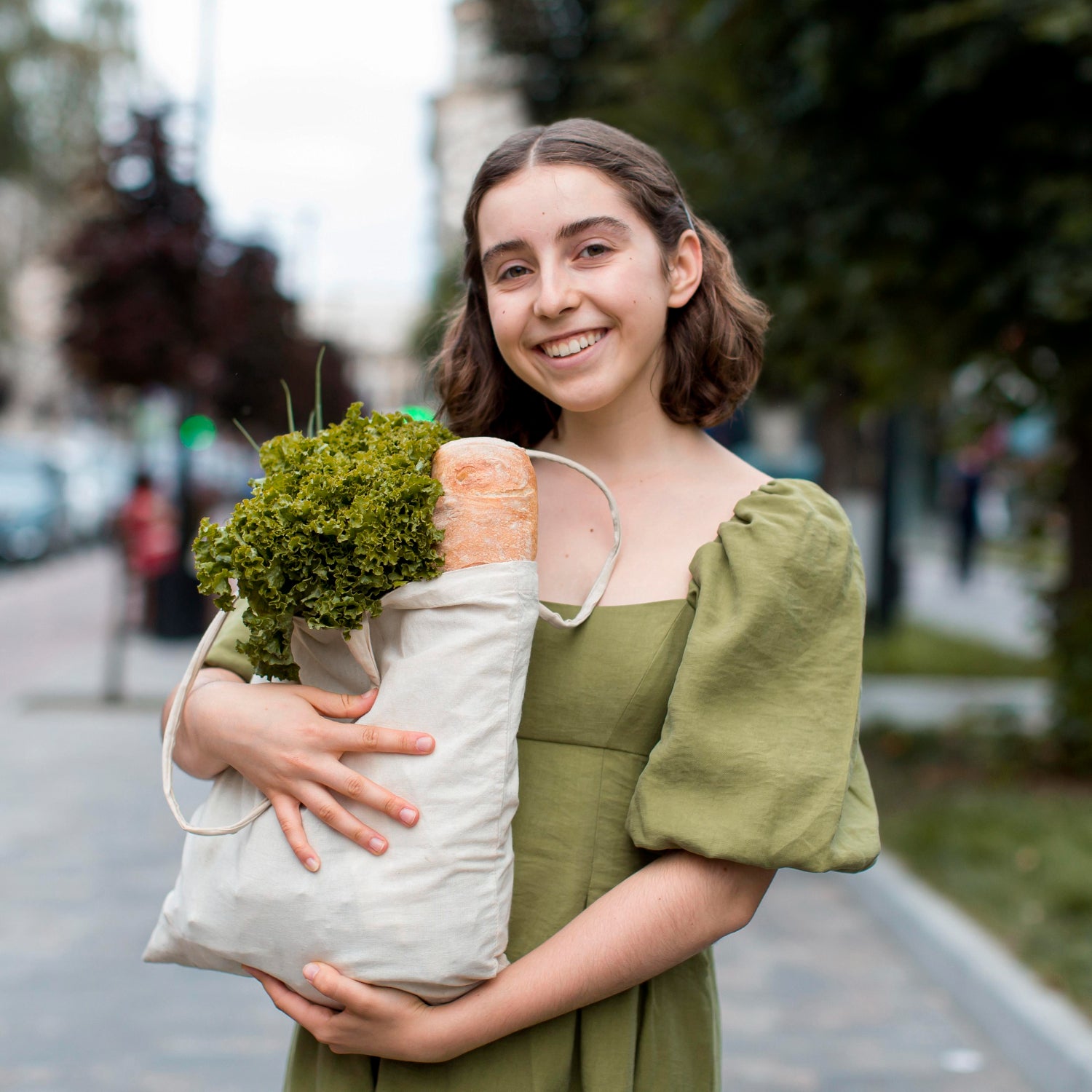Beginner’s Guide to Sustainable Living: 5 Simple changes you can make in your daily life
The last two decades have seen a multitude of businesses, media coverage, and marketing, all pushing for eco-friendly products, eco-friendly businesses, eco-friendly practices, sustainability development goals, and general and conscious consumerism.
What does sustainable living mean?
The United Nations Environmental Programme defines sustainable living as “understanding how our lifestyle choices impact the world around us and finding ways for everyone to live better and lighter.”
While naysayers argue that sustainability is an elaborate hoax perpetrated by mainstream media and politicians, proponents insist that the future of the human race (and nature) hinges heavily on sustaining economic growth while also protecting the environment.
To their credit, sustainable-living advocates existed even centuries ago. In fact, Airs, Waters and Places, a book commonly credited to Hippocrates, was one of the earliest to hypothesize that many illnesses were linked to air quality.
The basis for the current environmental movement emerged in the ‘60s. But it wasn’t until a 1987 report by the now-dissolved World Commission on Environment and Development, titled ‘Our Common Future,’ was published by the United Nations, that the word ‘sustainable development’ was first defined:
“Development that meets the needs of the present without compromising the ability of future generations to meet their own needs.”
The three largest contributors to global greenhouse gas emissions by industry are manufacturing, electricity & heat production, and livestock. But what can we, as individuals, do to mitigate the damage being wreaked by these massive industries? How can we help reduce the carbon footprint? Here are five simple ways to get started.
Become an ethical consumer
Being an ethical consumer brings up the question, “Can there ever be ethical consumption under capitalism?” The answer is “Yes!”, because the consumer under the capitalist system has a choice in what he/she chooses to purchase.
To that end, especially when it comes to brands that you support and purchase from, look for certified eco-friendly products and eco-friendly brands. That means staying away from fast fashion brands and buying second-hand (thrifting) or purchasing from brands that use eco-friendly materials - like organic cotton or linen instead of polyester and nylon.
Alternatively, with lifestyle brands, look for companies that use organic ingredients or materials, whether it is in the form of makeup, cleaning products, furniture, footwear, or appliances.
Eat meals free from animal products and use more local produce
In 2013, the Food and Agriculture Organization of the United Nations put global greenhouse gas emissions from the livestock industry at 14.5% based on data from 2004 and 2005. Peer-reviewed studies attribute the figure to be much higher, at 19.6%. Whichever percentage you consider, the average range seems to be between 11.1 to 19.6%.
The livestock industry is also responsible for land degradation, loss of biodiversity and forest cover, emissions of methane, ammonia, and carbon dioxide, land, water, and air degradation, excessive water use, and more.
Meat lovers don’t have to compromise on taste for ethics. There are many plant-based alternatives that have popped up in the last three years which simulate the taste of non-vegetarian products.
According to Exeter City Council (https://news.exeter.gov.uk/how-much-carbon-could-you-save-by-going-veggie-or-vegan-every-so-often/#:~:text=now%20and%20again%3A-,1%20vegan%20day%20per%20week%20(52%20days%20a%20year)%20can,80kgs%20of%20CO2%20per%20year), going vegan one day per week (52 days a year) can save nearly 50 kgs of CO2 per year, and going vegan one week per month (12 weeks a year) can save nearly 80 kgs of CO2 per year.
There are also many health benefits to a diet with less or no animal products. These include weight loss, reduction in the risk of heart disease by lowering cholesterol levels, management of diabetes by reducing A1C levels, and lowering the risk of certain cancers such as colon cancer.
Another way to eat sustainably is to consume seasonal and local foods. Being fresh means more nutrition, and minimal transportation emissions.
Carpool or use public transport?
The transport industry is among the top three in greenhouse gas emission. A great way to curb this is by carpooling to and from work, events, functions, or outings with friends. Alternatively you can also use public transport like the metro or a bus.
Additionally, cycling to nearby destinations is a great way to save on fuel costs, reduce the use of high-emission vehicles, and get some exercise in the process!
Switch off and switch to energy-efficient appliances
Saving electricity is another easy way to live sustainably. Switch off lights as well as electronics like televisions, your PC, and the Wi-Fi box when not in use or when you leave a room. Open up curtains and blinds instead, and make use of natural light instead of turning on the lights.
One of the biggest ways to conserve energy is by switching from incandescent lighting to LED or CFL bulbs. The latter last longer and also use less energy. When purchasing large appliances e.g. fridge or washing machine, look for energy star ratings to determine which energy-efficient options you have.
Reduce wasteful consumption
When it comes to waste, the first material that comes to mind is plastic. No wonder, since plastic is in almost everything we buy, from containers, to grocery bags, and in your clothing.
But the good news is that there are several easy ways to avoid generating plastic waste. For example, instead of picking up plastic bags at checkout, you could carry your own reusable bags. You can also buy in bulk from a farmer’s market and avoid plastic-wrapped foods (or buy a single larger quantity pack). Reusable coffee mugs made from compostable materials are also a better alternative to the plastic-lined paper cups and plastic lids given at coffee shops. Similarly, carry a refillable water bottle rather than single-use bottled water.
When it comes to clothing, buying second-hand keeps old clothing out of landfills. Investing in better quality items, while more expensive initially, will be more economical in the long-run. Support ethical fashion labels and don’t forget to check the clothing labels of the items you buy yourself! Avoid garments made of materials like polyester, rayon, and acrylic, as they shed tons of microplastics into the water when washed, and this in turn ends up in the ocean and other water bodies.
In the kitchen, limit the purchase of ingredients or food items that can’t be safely stored in the fridge or freezer. Repurpose old glass jars to store food and leftovers. Use cloth, rather than paper, to clean up.
Overall, to promote sustainability and be a conscious consumer, a good question to ask yourself is, “Is this necessary?” If the answer is “Not really…”, place it back on the shelf or leave that Shopping Cart unloaded.







